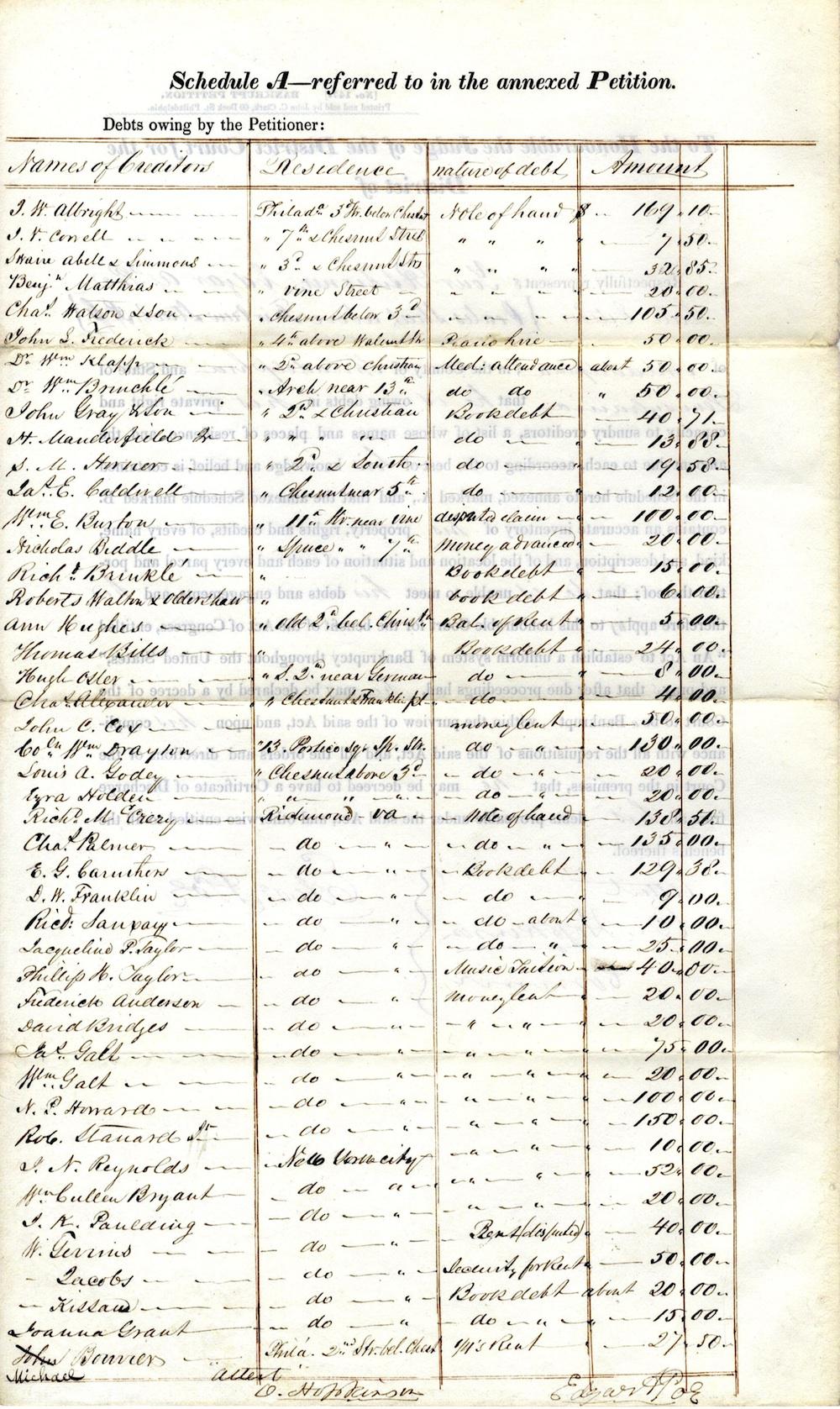The Vault is Slate’s history blog. Like us on Facebook, follow us on Twitter @slatevault, and find us on Tumblr. Find out more about what this space is all about here.
Edgar Allan Poe filed for bankruptcy in the Eastern District of Pennsylvania in December 1842, appending this list of creditors and debts to his petition. The writer, who supported a sick wife and a mother-in-law and lacked the backstop of family money, was constantly scraping for sufficient funds. This list shows just how extensive his array of debts was in the early 1840s.
Poe filed for bankruptcy under the short-lived federal Bankruptcy Act of 1841, which was meant to alleviate the financial strain of the Panic of 1837. The 1841 act opened the door to voluntary petitions of bankruptcy, and many Americans (both individuals and merchants) took advantage of it. Thirty-three thousand cases were filed under its auspices before it was repealed.
The Panic of 1837, instigated by a real estate bubble and worsened by instability in banking, affected Poe because the resulting climate caused many magazines to shut down. At the time, Poe was trying to support himself and his family as a writer, and commissions and positions were hard to come by.
Poe owed money to doctors for “medical attendance,” to any number of businesses for “book debt” (a standard term meaning “money owed a business for its goods or services”), to a music teacher, and to many individuals who had lent him money over the years. The creditors’ addresses are in Philadelphia, Richmond, and New York, reflecting the writer’s residencies over the past decade.
Poe’s petition was granted in January 1843.
I first spotted this document on the National Archives’ Today’s Document Tumblr, where you can see the rest of Poe’s petition.
Click on the image below to reach a zoomable version.

National Archives and Records Administration, Philadelphia.